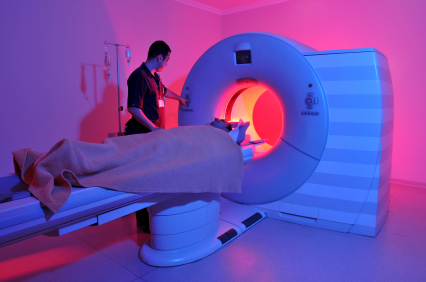When a parent takes their child to see a doctor after a sports injury and is told that an MRI needs to be ordered so the doctor can "figure out what is going on", their immediate reaction is probably to ask three questions:
- What will they find?
- How long will it take to heal?
- How much is this going to cost?

Here's what you need to know as a parent about an MRI when you talk to the PT:
1. Don't be afraid to ask questions
The unknown is far scarier than knowing the facts, so pull aside the physical therapist and have him or her you what the MRI means in plain English. Medical terminology is often scarier than it actually is, and PTs are experienced in helping parents and patients - often with the aid of skeletal models and pictures - understand a sports injury and how it will be treated.
2. An MRI does not always mean surgery
MRIs are performed to provide your child's doctor information about an injury, not automatically as a step towards surgery! Granted, an MRI is usually done when surgery is called for, but the vast majority of MRIs do not result in surgery. The very fact the doctor is sending your child to physical therapy instead of recommending surgery is probably because the injury is not viewed as so serious as to require immediate surgical intervention and can be treated more conservatively.
3. Physical therapists treat patients
Physical therapists use an MRI as a guide in treatment, but not as the the only guide. What your child says, and what the PT finds upon objective testing during physical therapy don't always confirm the results of the MRI. Your child is probably in physical therapy because of pain, weakness, joint instability, severe swelling. The MRI is only one factor the PT considers in developing a treatment plan and during the course of therapy.
For example, if an MRI reports "shoulder tendonitis" and your child has pain to pressure over the shoulder, weakness with lifting, and pain while sleeping, the MRI is consistent with the PT's findings on examination and will guide therapy. On the other hand, if, despite an MRI of shoulder tendonitis, the PT finds no pain to pressure, full range of motion and strength, and the results of all other orthopedic manual testing are negative, the focus of therapy will be different, and will be based on what the patient is feeling and doing, not what the MRI says.
False positives
One of the problems with MRIs as a diagnostic tool is that they generate a lot of what are called "false positives." Look at MRIs of the backs of 100 people with no reports of back problems, studies suggest, and more than half of them will be found to have a bulging disc somewhere along their spine. For people over the age of 60, as many as one-third may have a rotator cuff tear, but yet not be experiencing pain or loss of function. An MRI may show a tear of the ACL, but the athlete may be pain free and objective tests may suggest the ligaments are intact.
The human body has an amazing ability to heal, particularly in younger athletes. The MRI that revealed "severe rotator cuff tendonitis" should no longer be a constant worry if, a month later, your child is no longer experiencing pain while pitching. The bottom line again, is that a physical therapist's job is to treat your child, not the MRI.
Final advice
My advice to parents, then, is if your child has to get an MRI for a particular injury and physical therapy is needed, make sure to:
- Ask questions;
- Don’t dwell on risk of surgery; and
- Focus on progress, not what a piece of paper says.
If you have questions, ask away! Your physical therapist will be happy to answer them.
Posted March 3, 2012








